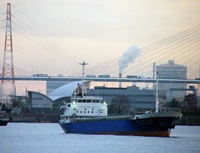Japan’s trade deficit rises 9.5% in May
20 Jun 2013
Japanese trade deficit rose 9.5 per cent in May to ¥994 billion ($10.5 billion) compared to a year ago, the longest running string of monthly deficits in three decades, according to latest data released by the country's finance ministry.
 However, the deficit, recorded for the eleventh consecutive month, was significantly lower than analysts' expectations of around ¥1.2 trillion, on the back of strong exports to the US and China.
However, the deficit, recorded for the eleventh consecutive month, was significantly lower than analysts' expectations of around ¥1.2 trillion, on the back of strong exports to the US and China.
Exports rose 10.1 per cent to ¥5.8 trillion for the third straight month and at the fastest pace since two and a half years, helped by a weaker yen although exports to recession-hit Europe fell 4.9 per cent.
Imports climbed 10 per cent to ¥6.76 trillion registering an increase for the seventh consecutive month as fuel imports surged and cost of other items rose due to the fall in currency value.
The strong export data follows a better than anticipated GDP growth in the first quarter of 2013, when the world's third-largest economy expanded at an annualised rate of 4.1 per cent buoyed by strong domestic demand and pick-up in exports.
Many believe that the monetary policies initiated by prime minister Shinzo Abe for the country's economic growth is yielding posting results.
Continuous weakening of the yen since last October has significantly helped Japanese exporters in recent months.
The Japanese currency that was traded at around 78 against the US dollar in mid-October weakened to around 96 a dollar after touching a high of 103 in May, the highest level since August 2008.
''It is not just the weaker yen increasing the value of exports, the amount of exports is increasing as well,'' Junko Nishioka, chief economist at RBS Securities Japan, told Dow Jones Newswires.
''This shows Japanese companies are increasingly in better shape. Their profitability is also rising these days, meaning they are becoming more resilient to potential external shocks,'' she added.
Japanese exports to the US surged over 16 per cent to ¥ 1.04 trillion in May while imports increased 10 per cent to ¥614 billion registering a 26-per cent jump in surplus to ¥427 billion.
Exports to China, Japan's biggest trading partner, rose 8.3 per cent in May to ¥1.05 trillion while imports shot up 15 per cent to ¥1.46 trillion, leaving a deficit of ¥410 billion.
Much of the trade deficit is attributed to growing demand for fuel to meet the country's energy needs due to shutting down of nuclear reactors following the Fukushima-Daiichi catastrophe in March 2011. Imports from the Middle East, increased 11.5 per cent over last year to ¥1.23 trillion.
According to some economists, returning to a trade surplus would require much stronger exports and a revival in global economy.
Last month, the Bank of Japan said that ''Japan's economy has started picking up.'' It further stated that the quantitative and qualitative monetary easing and the bond purchase programme will continue, aiming to rein in 15 years of deflation and achieve an inflation target of 2 per cent, as long as it is necessary for maintaining that target.






















